If you have a large fish tank, and you’re looking for a hardy, attractive community fish that can help to prevent algae from taking over your aquarium, the Sailfin plecostomus or Pterygoplichthys gibbiceps could be exactly what you’re looking for.
These bottom-dwelling fish from South America are easy to care for, and they’re long-lived, too. Sailfin plecos grow pretty large, making a striking addition to your tank.
This comprehensive guide tells you what you need to know about caring for after the Sailfin pleco.
Sailfin Pleco – Overview
Scientific Name
Pterygoplichthys Gibbiceps
Common Name (species)
Sailfin pleco, Leopard pleco, Clown pleco, Clown Sucker Fish
Family
Loricariidae
Origin
South America, Peruvian and Brazilian Amazon, Rio Pacaya in Peru, Rio Orinoco.
Diet
Omnivore: Primarily green algae, bloodworms, brine shrimp, blanched veggies
Care Level
Beginner/Easy
Activity
Bottom-dwelling, active foragers
Lifespan
Between 10 and 15 years
Temperament
Peaceful community fish
Tank Level
Bottom-dweller
Minimum Tank Size
100 gallons
Temperature Range
Tropical 73° to 86° Fahrenheit
Water Hardness
4 – 18 dGH
pH Range
6.5 to 8.0
Filtration/Flow Rate
Likes well-filtered water and a moderate flow rate
Water type
Freshwater
Breeding
Egg layer, commercially bred
Compatibility
Peaceful with most species of sociable fishes. Can be territorial toward its own species unless raised together from juveniles
OK, for Planted Tanks?
Safe with plants
Origins
The Sailfin pleco was first described in 1854 as Ancistrus gibbiceps by Kner and then again as Liposarcus altipinnis by Gunther. After that, the species was further described as Glyptoperichthys gibbiceps, although that name is now regarded as a synonym.
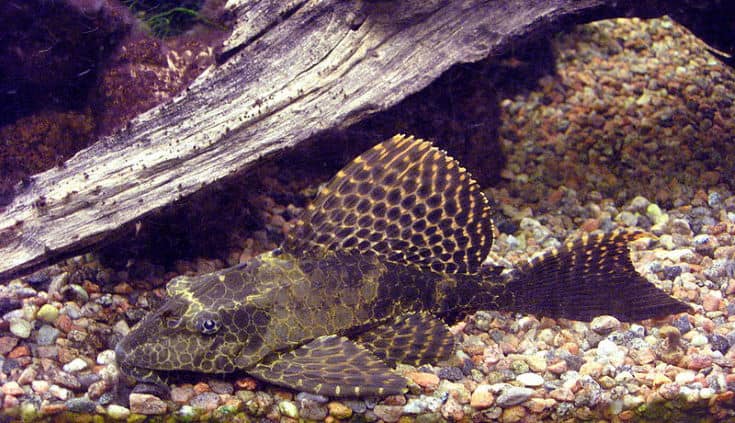
Plecos are also called suckermouth catfish. There are over 680 species of suckermouth catfish; however, the Sailfin pleco is unique in that its dorsal fin has more rays than other pleco varieties. Most plecos have eight or fewer rays, whereas Pterygoplichthys gibbiceps has in excess of ten.
Defense mechanisms
The Sailfin pleco can lock its pectoral spines at 90 degrees from its body. That makes the fish incredibly difficult for a predator to swallow but also makes it very difficult to net. So, when moving the fish, always use a jar or tube. When removed from the water, the Sailfin pleco makes a loud hissing sound, which is also designed to deter predators.
The Loricariidae family of fish are classified as armored catfish, their bodies and suckermouths being covered with protective bony plates. These fish also have a modified vascularized stomach, enabling the animal to breathe air.
Natural Habitat
Sailfin plecos come from the Amazon and Orinoco River basins in Ecuador, Peru, Brazil, and Venezuela.

The river waters here are slow-moving and sluggish, and the fish migrate to flooded forested areas when the wet season arrives, and water levels drop. Plecos burrow into the muddy river banks where they spend much of the daytime hiding, venturing out at night to feed.
Appearance
The Sailfin pleco has an elongated body and a very large head with tiny, high-set eyes. The upper part of the fish’s body has a covering of protective bony plates.
The fish has a stunning dorsal fin that can grow to measure several inches high, resembling that of the marine Sailfish. The fin has over ten rays, compared with the eight rays of other pleco species.
Sailfin plecos are beautiful fish, being dark brown with a creamy white pattern of condensed spots across the whole body and finnage.
Size
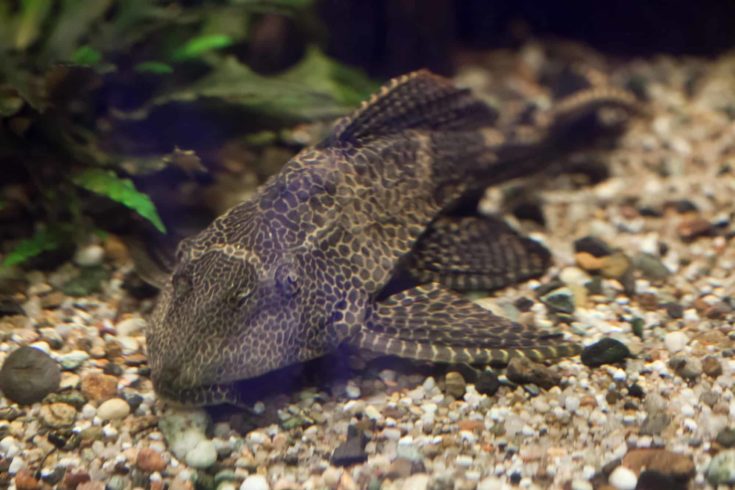
The Sailfin pleco typically grows to between 13 and twenty inches long in captivity.
These fish are fast-growing, too, so do bear that in mind if you’re planning on buying a small specimen with a view to upsizing your tank in the future.
Life Expectancy
Sailfin plecos are very long-lived fish, surviving for over 20 years in nature and enjoying a life expectancy of between 10 to 15 years in captivity if they are given proper care and a good diet.
Activity Level/Temperament
Sailfin plecos are most active at night. During the daytime, the fish tend to hide and shelter underneath logs, dense planting, or caves.
These fish are confirmed bottom-dwellers, very rarely venturing to the upper areas of the water column unless grazing on algae on the tank sides.
Compatibility and Tankmates

The Sailfin pleco is a peaceful fish that makes a good addition to a community setup. These fish are not about to make a meal out of small fish species or invertebrates, and their armored body keeps them protected from curious tankmates.
However, these plecos can be territorial with their own kind as adults unless they grow up together, so I don’t recommend keeping multiple Sailfin plecos unless you buy two that have been raised in the same tank.
It’s important to know that Sailfin plecos do eat the slime coating of other fish, and large, slow-swimming fish such as Angelfish and Discus are particularly at risk in this regard.
Feeding
As with any tropical fish species, feeding your fishes on the correct diet is essential for their health and wellbeing. So, although it might be tempting to buy cheaper foods, I recommend that you give your Sailfin plecos the best quality food you can afford.
What to Feed Your Sailfin Plecos
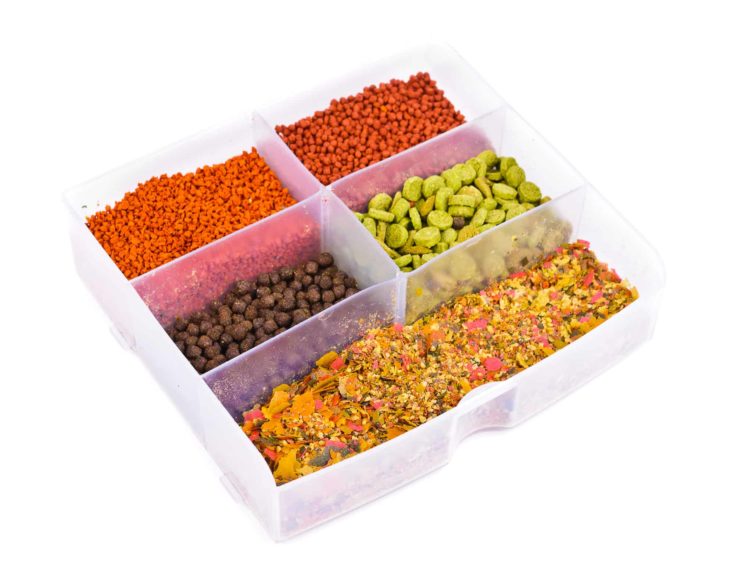
Sailfin plecos are omnivores, although the bulk of the fish’s diet consists of algae. However, unless your tank has a lot of green algae growing in it, you will need to supplement the pleco’s diet with algae wafers, sinking pellets, and green foods. You can also offer blanched veggies, including lettuce, peas, zucchini, and spinach.
Plecos also eat live and frozen meaty foods, including bloodworms, tubifex, insect larvae, and small crustaceans.
How Much and How Often to Feed
When feeding your plecos, bear in mind that they are most active at night. So, it’s best to feed them just before you put your aquarium lights out for the day.
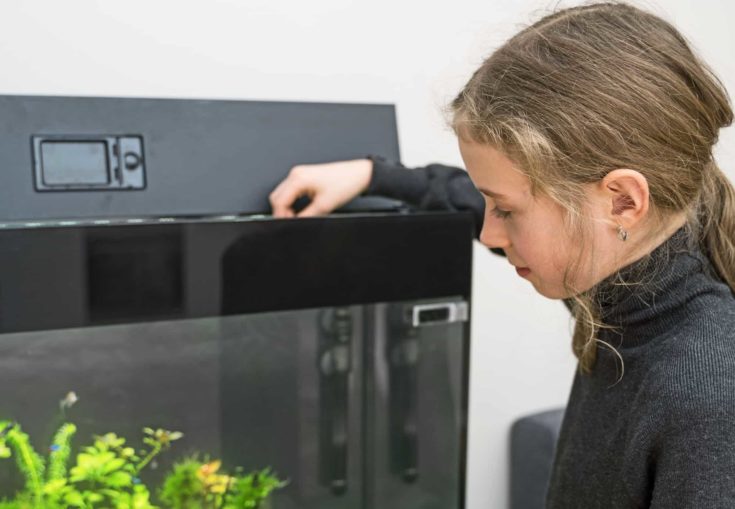
If you have a lot of algae growing in the tank, take care that you don’t overfeed your fish by offering supplementary foods that the plecos don’t need. Uneaten food will only end up in the substrate, where it will rot and pollute the water.
Tank Requirements
Sailfin plecos are hardy creatures that are relatively straightforward to care for.
Tank size
When stocking your tank, remember that these plecos can grow to between 13 and 20 inches in captivity, and they are pretty fast-growing, too. So, that cute little juvenile fish that stole your heart in the fish store will rapidly get to a large size.
I recommend that you have a tank of at least 100 gallons to accommodate one Sailfin pleco, larger if you plan on keeping more.

As these fish are bottom dwellers, a shallower rectangular tank is the best shape to choose, rather than a tall, deep one.
Tank Setup
Substrate
A soft, sandy substrate is the best choice for these plecos, as they are primarily bottom-dwellers that like to burrow.
Decorations
Your aquarium should have plenty of live plants to offer hiding places for your fish, as well as tangled roots, driftwood, caves, and smooth rocks. Choose hardy plant species as the plecos can cause damage to delicate leaves while rasping away algae.
You must provide lots of wood for the fish to “chew” as they rasp off algae that are growing there. It’s thought that the cellulose contained in the wood acts as a digestive aid for the fish.
Habitat Requirements
Filtration

Sailfin plecos are large fish that produce a lot of waste, so you do need a powerful filtration system to cope with the bioload. We recommend using a canister filter or powerhead that provides an hourly flow rate of at least four times the aquarium volume, preferably more.
Water Parameters
Water Temperature
Sailfin plecos are tropical fish that need a water temperature of 73° to 86° Fahrenheit.
Water Hardness And pH Range
The tank’s water hardness should be between 4 and 18 dGH, and the pH range should be from 6.5 to 8.0.
Lighting
Sailfin plecos are happy in a tank with moderate to normal lighting levels, although you can provide them with additional shade by using floating plants.
Tank Maintenance
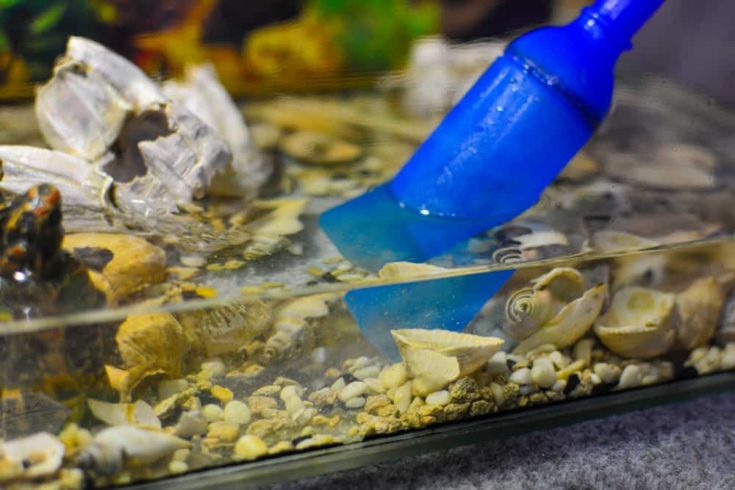
Although the water chemistry in the tank is not critical for the Sailfin pleco, the water quality must be very good. To keep the water in pristine condition, you’ll need to carry out 10% to 15% water changes every other week to cope with the bioload.
You will also need to pay attention to cleaning the substrate with an aquarium vacuum to remove uneaten food, fish waste, and rotting plant matter from the tank. Be sure to clean thoroughly in areas where waste accumulates, including deep down in the substrate, around the base of plants, and underneath decorations.
Your filter sponges, cartridges, or other filter media should be cleaned and replaced regularly so that the filtration system remains efficient.
Setting Up the Aquarium
I recommend that you don’t introduce plecos to your tank until it has had time to mature and has some algae growing on the surfaces to provide the fish with a food source.

However, if you do decide to add a Sailfin pleco to a newly established tank, you must remember to provide the fish with plenty of food until algae starts to grow. You can grow algae by placing some pieces of driftwood in a bowl of water on a windowsill where there’s plenty of sunlight. Once there’s a decent growth of algae on the wood, put it into the tank for the plecos to graze on.
So, to set up your tank, start by gathering together all the items that you need:
- Sandy or fine gravel substrate
- Lighting unit
- Filtration system
- Heater
- Aquarium thermometer
- Decorations, including pieces of wood, rocks, and caves
- Plants
How to set up your tank:
- Start by rinsing your substrate under running water to get rid of dust. Although you can buy prepared, ready-rinsed substrate, it still does contain a small amount of dirt, so always wash the substrate before putting it into your tank.
- Add the substrate to your tank to a depth of around three inches.
- Put your heater and filtration unit into position, but don’t turn them on yet.
- Now, it’s time to fill the aquarium with water. To avoid sending substrate all over the place when you pour the water into the tank, put an upturned bowl on the gravel, and decant the water over it.
- Ammonia is required to start the nitrogen cycle in your biological filter. So, add a water conditioner to the tap water to get rid of the chlorine, and then add a few drops of pure ammonia to the water. Alternatively, you can add some fish food or substrate from an existing tank.

- Rinse your tank decorations to get rid of dust, and then add them to your aquarium.
- Prepare live plants by trimming off any dead bits of stem and removing brown or dead leaves. When you put the plants into your tank, remember that they will grow and spread, so check the supplier’s information before planting.
- Switch on the filter unit system and heater, and leave the tank to cycle for at least ten days before you add any fish. You don’t need to switch the lights on unless you’ve planted your tank.
- After ten days, test the water to make sure that the levels of ammonia and nitrites are at zero and nitrates are at a maximum of 20ppm.
Health and Disease
Sailfin plecos are generally very robust and healthy fishes that don’t suffer too much from diseases.
However, one big problem for these fish is starvation. I cannot overstress the importance of supplementing the plecos diet, especially if there are not many green algae growing in the tank.
Signs of Good Health
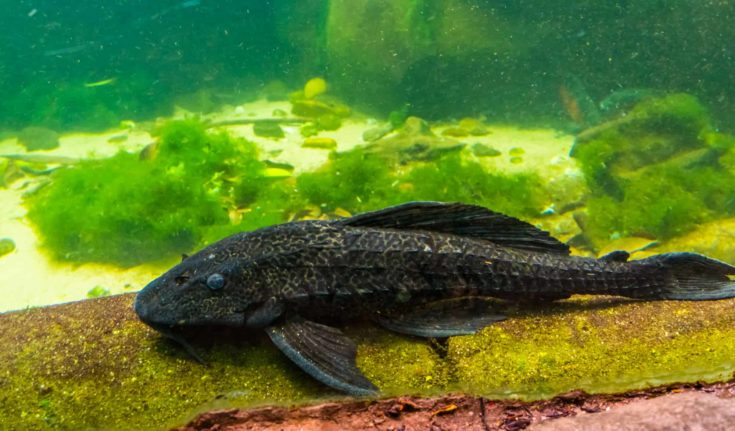
Sailfin plecos are not the most active fish, spending much of the daytime hiding away. That makes it tricky to assess their health and monitor how much the fish are eating. For that reason, I suggest that you choose a lighting unit that has a moonlight setting that allows you to watch the fish after lights out.
Red Flags
There are a few red flags to watch out for that could indicate health problems in your plecos, including:
- Not eating
- Lethargy
- Swellings, reddened areas on the skin, ulcers
- Flicking against tank decorations and the substrate
Common Health Issues and Treatment
Health Issue
Ich (White Spot Disease)
Symptoms or Causes
Ich is an extremely common fish disease that’s also known as White Spot disease.
It is caused by the protozoan parasite, presenting as a sprinkling of tiny white spots across the fish’s gills, body, and fins. Fish with Ich flick against the substrate and tank décor.
Suggested Action
Raise the water temperature to 82o F for several days, and dose the water with an over-the-Ich remedy.
Health Issue
Skin and gill flukes
Symptoms or Causes
Flukes are parasites that attach themselves to the fish’s body and gills. Fish with flukes rub against the substrate and tank décor and sometimes secrete excessive mucus.
Suggested Action
Dose the water with suitable anti-parasitic medication.
Health Issue
Fungal infections
Symptoms or Causes
White fluffy, cottony growths.
Suggested Action
Quarantine all affected fish; dose water with antifungal treatment
Health Issue
Bacterial infections
Symptoms or Causes
Reddened skin, ulcers, sore patches.
Suggested Action
Quarantine affected fish; treat the whole tank with antibacterial water treatment.
Breeding
In nature, Sailfin plecos spawn in deep burrows that the fish create in the muddy walls of the river banks where the fish live.
Breeding these fish in home tanks is very rare, and most of the specimens that you find for sale online and in fish stores are bred commercially in large fishery ponds where spawning pits are created that replicate the fish’s natural breeding habitat.
Availability
Sailfin plecos are readily available in fish stores and online. Prices vary widely, depending on the size and age of the fish.
Product Recommendations
- A fishnet
- Algae magnet

- Aquarium thermometer
- Aquarium vacuum
- Books on keeping tropical fish
- Filtration system
- Fish tank (minimum size 100 gallons)
- Heater
- High-quality algae wafers
- Lighting unit
- Rocks, driftwood, twisted roots
- Sandy or fine gravel substrate
- Selection of frozen foods
- Water conditioner
In Conclusion
I hope you enjoyed our guide to caring for the beautiful Sailfin pleco.
Do you have a Sailfin pleco, or do you have any questions about the care of these stunning fish? Share with us in the comments box below.
And don’t forget to share our article with fellow hobbyists if you enjoyed it!